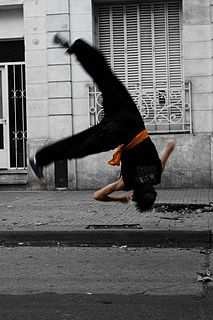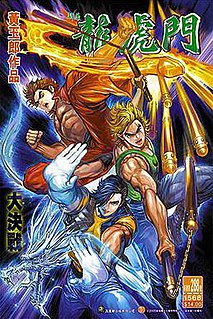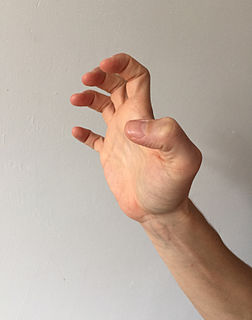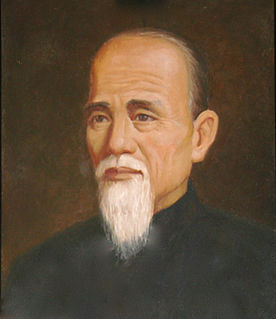
Shaolin Kung Fu, also called Shaolin Wushu, or Shaolin quan, is one of the oldest, largest, and most famous styles of wushu, or kung fu. It combines Ch'an philosophy and martial arts and originated and was developed in the Shaolin temple in Henan province, Greater China during its 1500-year history. Popular sayings in Chinese folklore related to this practice include "All martial arts under heaven originated from Shaolin" and "Shaolin kung fu is the best under heaven," indicating the influence of Shaolin kung fu among martial arts. The name Shaolin is also used as a brand for the so-called external styles of kung fu. Many styles in southern and northern China use the name Shaolin.

Hung Ga (洪家), Hung Kuen (洪拳), or Hung Ga Kuen (洪家拳) is a southern Chinese martial art belonging to the southern Shaolin styles. The Hallmarks of Hung Ga are strong stances, notably the horse stance or "si ping ma" (四平馬), and strong hand techniques, notably the bridge hand and the versatile tiger claw. Traditionally, students spent anywhere from several months to three years in stance training, often sitting only in horse stance from half an hour to several hours at a time, before learning any forms. Each form could then take a year or so to learn, with weapons learned last. In current times, this mode of instruction is generally considered impractical for students, who have other concerns beyond practicing kung fu. However, some instructors still follow traditional guidelines and make stance training the majority of their beginner training. Hung Ga is sometimes mis-characterized as solely external—that is, reliant on brute physical force rather than the cultivation of qi—even though the student advances progressively towards an internal focus.

Black Tiger Fist is a northern Chinese martial art originating in Shandong Province.

Wong Kei-ying or Huang Qiying was a Chinese Hung Ga martial artist and physician of Cantonese ethnicity, who lived during the Qing dynasty. He was one of the Ten Tigers of Canton. He was best known for his use of the Tiger Crane Paired Form Fist skill set. His son, Wong Fei-hung, who inherited his martial arts and medical skills, is commonly portrayed as a folk hero in Chinese popular culture.

The Ten Tigers of Canton or Ten Tigers of Guangdong refers to a group of ten Chinese martial artists from Guangdong Province lived around the 19th century during the Qing dynasty in China. They were said to be the greatest fighters in Guangdong during the Qing era. Much of their existence has been embellished by folk legends and stories passed down from generation to generation.

Chángquán refers to a family of external martial arts styles from northern China.

Bak Mei is said to have been one of the legendary Five Elders — survivors of the destruction of the Shaolin Monastery by the Qing dynasty (1644–1912) — who, according to some accounts, betrayed Shaolin to the imperial government. He shares his name with the South Chinese martial art attributed to him.

In its broadest sense, Northern Shaolin refers to the external martial arts of Northern China referring to those styles from the Northern Shaolin Monastery in Henan.

In the Chinese martial arts, imagery of the Five Animals, Ng Ying Kung Fu Chinese: 五形; pinyin: wǔ xíng; lit. 'Five Forms')—Tiger, Crane, Leopard, Snake, and Dragon—appears predominantly in Southern styles, especially those associated with Guangdong and Fujian Provinces. An alternate selection which is also widely used is the crane, the tiger, the monkey, the snake, and the mantis.

Jow Ga Kung Fu is a form of Kung Fu. It was founded by Jow Lung who was born in 1891, on the eleventh day of the third lunar month in Sa Fu Village of the Canton Province, and died in 1919. His father was Jow Fong Hoy and his mother’s maiden name was Li. At the time of its inception, this particular style of Kung Fu was labeled as having the head of Hung Gar, the tail of Choy Gar and the patterns of the tiger and leopard, or simply Hung Tao Choy Mei. It was so labeled because the essential techniques incorporated the muscular and mighty movements of Hung Gar and the swift footwork and complex kicking of Choy Gar, making it a very effective form of self defense with emphasis on simultaneous attack and defense.

Lam Sai-wing was a Hung Gar martial artist. He was a student of the Chinese martial artist, acupuncturer and folk hero of Cantonese ethnicity, Wong Fei-hung.

Yau Kung Mun 柔功門 is a Shaolin martial art.

Oriental Heroes is a popular Hong Kong-based manhua created by Wong Yuk-long, a writer/artist responsible for also creating a number of other popular manhua titles. It was created in 1970, and it continues to be published today. The book was the first Hong Kong manhua title based on action and fighting, often borrowing from the wuxia literary world. It established a new action genre of Hong Kong manhua and spawned many imitators. The theme of its stories often revolve around brotherhood and the fight for justice. The 2006 movie Dragon Tiger Gate was based on this manhua.

Fu Jow Pai, originally named "Hark Fu Moon", is a Chinese martial art that has its origins in Hoy Hong Temple out of Tiger techniques of Five Animal Kung Fu, Ng Ying Kungfu. The system "was modeled after the demeanor and fighting strategy of an attacking tiger. Techniques unique to Fu-Jow Pai are ripping, tearing, clawing and grasping applications."
So Chan, also known by his nickname Beggar So, was a Chinese martial artist and folk hero who lived during the late Qing dynasty. One of the Ten Tigers of Canton, he was best known for his drunken boxing.

Choy Lee Fut is a Chinese martial art and wushu style, founded in 1836 by Chan Heung (陳享). Choy Li Fut was named to honor the Buddhist monk Choy Fook who taught him Choy Gar, and Li Yau-San (李友山) who taught him Li Gar, plus his uncle Chan Yuen-Wu (陳遠護), who taught him Hung Kuen, and developed to honor the Buddha and the Shaolin roots of the system.

Chan Heung was the founder of the Choy Li Fut martial arts system.
Phillip Ko-Fei was a Hong Kong filmmaker.

Drunken boxing also known as Drunken Fist, is a general name for all styles of Chinese martial arts that imitate the movements of a drunk person. It is an ancient style and its origins are mainly traced back to the Buddhist and Daoist religious communities. The Buddhist style is related to the Shaolin temple while the Daoist style is based on the Daoist tale of the drunken Eight Immortals. Zui quan has the most unusual body movements among all styles of Chinese martial arts. Hitting, grappling, locking, dodging, feinting, ground and aerial fighting and all other sophisticated methods of combat are incorporated.
Chan Kowk-wai was born on April 3, 1936, at Toisaan in the province of Canton, China. He introduced traditional Shaolin Kung Fu to Brazil through the China-Brazil Kung Fu Academy. His disciples have spread as far as the USA, Canada, Spain, Argentina and the Czech Republic.









